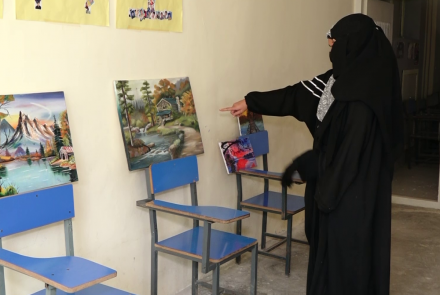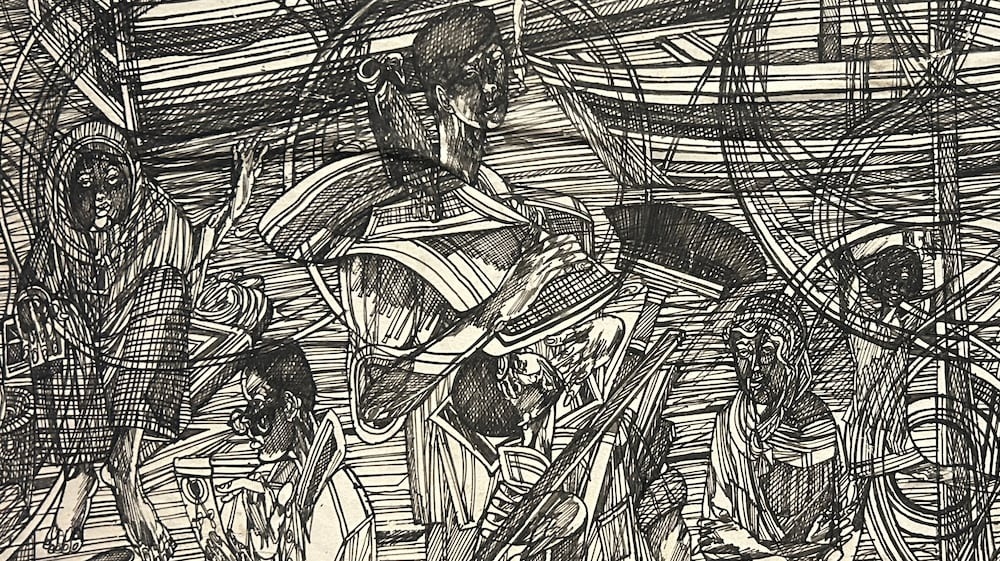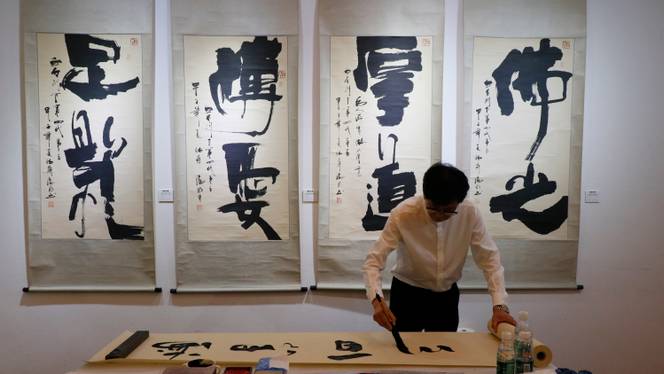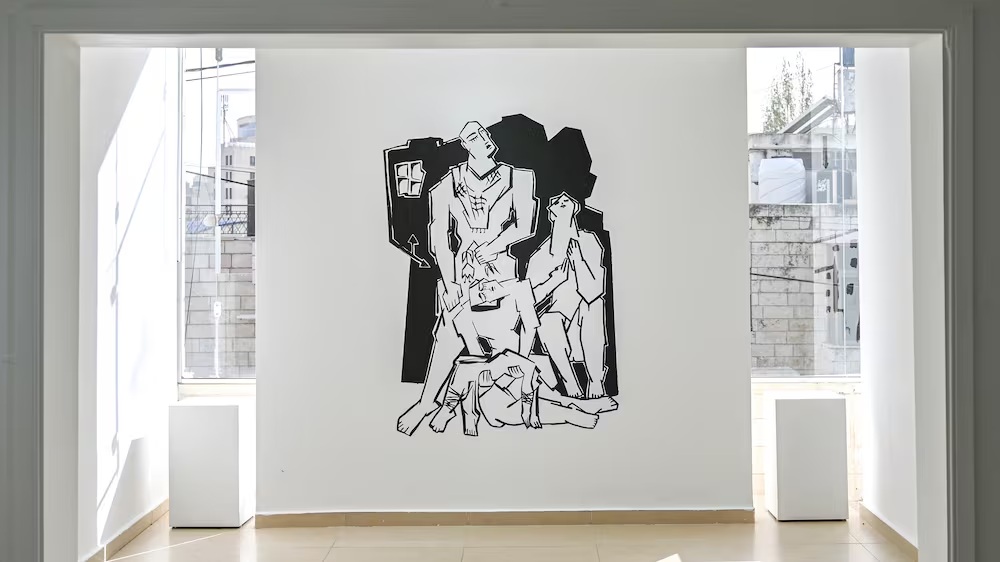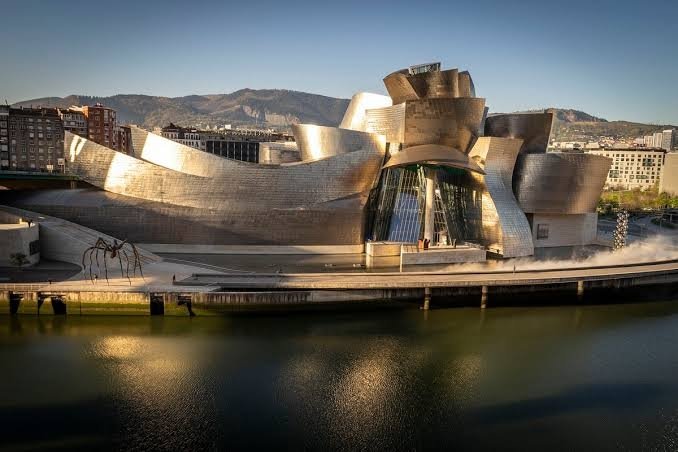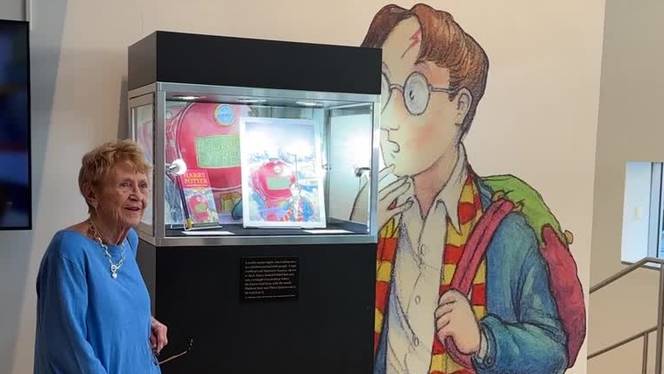
Razmig Bedirian
In late February, South African artist Tracey Rose arrived at the opening of her exhibition at Kunstmuseum Bern in Switzerland to find a glaring and problematic omission.
Her 2012 video artwork A Muster of Peacocks: The Shoah was not part of her retrospective, Shooting Down Babylon. Rose says it was removed without her knowledge or consent. It was an act, according to Rose and her team, of censorship over fears about how the work may be received as the Israel-Gaza war continues.
Now, in an interview with The National, Rose further alleges that the museum’s handling of the exhibition’s opening was indicative of a larger issue, which involved scheduling a press conference that she says would have been akin to a “lynch mob”, all of which caused her mental distress and delayed her public response to the matter.
A representative for the Swiss museum has told The National that “there was no censorship”, adding that it had “advised” Rose not to show the workand that she “decided to follow our advice”. Rose and her team dispute the museum’s version of events, calling it “a blatant lie”.

Rose, 50, grew up in the apartheid-era South Africa and has exhibited at some of the world’s top art events, including Venice Biennale, Documenta and the Sharjah Biennial. Her work often challenges injustices, racism and misogyny. In that way, A Muster of Peacocks: The Shoah is a work that fits neatly in her oeuvre.
In its original form, the piece comprises a drawing displayed on an iPad screen as well as a sound component. The drawing, seemingly created by charcoal, features the words: “Stop the Muslim holocaust”.
It is this phrase that the museum, Rose claims, had an issue with. The work had been a subject of conversation between the artist and the museum before the exhibition’s opening on February 23.
Rose was called to a meeting with the museum’s administrative body ahead of the exhibition opening and says she was told that “it is illegal to use the word holocaust” in Switzerland if it didn’t reference the genocide of European Jews during Second World War by the Nazis. “They were like, ‘You can go to jail for that’,” Rose says. “That’s basically what they told us.”
Rose says she decided to compromise. She offered to leave out the visuals and to instead incorporate only its sound component. “I wanted to have at least the audio present,” she says. “Then that way, at least the word ‘holocaust’ is not seen, but the conversations can still happen. All the works exist to have conversations.” However, Rose found on the day of her exhibition’s opening that the work had been removed in its entirety.
Controversy in Switzerland
According to Rose, omitting the workwas a decision taken by the museum to placate criticism in Switzerland about the show.
Rose had arrived in Switzerland to considerably negative press, largely due to the fact that the artist had signed an open letter in 2021 accusing Israel of violent and discriminatory actions against Palestinians in Jerusalem’s Sheikh Jarrah district
The petition, titled A Letter Against Apartheid, was signed by thousands of cultural figures. The resurfacing of the letter prompted Jonathan Kreutner, Secretary General of the Swiss Federation of Jewish Communities, to criticise Rose.
“The artist‘s support for this action makes it clear that she obviously represents radical and not constructive positions,” Kreutner said in a statement, as quoted in Kunstmuseum Bern’s description of Shooting Down Babylon.
The museum in Bern issued a response, saying Rose “has Jewish and Muslim roots”. Its statement read: “She condemns the cruel attacks by Hamas on Israel and the severe retaliatory measures by the Israeli government, which also affect the unarmed civilian population in Palestine. She condemns all forms of Islamophobia, racism and anti-Semitism and has spoken out clearly in favour of a ceasefire between Israel and Palestine.”
Upon seeing the removal of A Muster of Peacocks, Rose says she didn’t have the “strength to take on this conversation” at the time, saying she had been sick and in physical pain following an injury late last year. She had also been fatigued by the museum’s treatment of her. The accommodations the museum had provided her and her team was questionable, she says. She also stressed that the museum had failed to pay adequate loan and artist labour fees.
“I needed to get home and I needed to heal,” she tells The National, referencing her decision to make the matter public four months later. “I needed to reassess. This is why this is only happening now.”
The artist first began shedding light on the work’s removal through an open letter to the museum that she posted on her Facebook page on June 15.
Rose’s statement came ahead of a panel discussion at Kunstmuseum Bern that she says she was deliberately excluded from. The June 16 talk, entitled Art – Museum – Freedom and described on the museum’s website as being held on the occasion of Tracey Rose’s exhibition, featured one of the curators of the exhibition as well as the museum’s director.
“How ironic that I was not informed nor invited,” Rose wrote in the open letter. “Not only did you not inform me and exclude me from speaking, it is clear that you all deliberately selected only German speakers who are not of my choosing.”
“This is prejudicial to the global audience to whom my artwork speaks,” Rose continued. “As well as elitist and exclusionary – distasteful to say the least; and abjectly draconian given that the discussion will centre on the horrors of the unbalanced war in The Holy Land, and the genocidal slaughter of unarmed civilians in Palestine by the Israeli government.”
The National reached out to Kunstmuseum Bern regarding the matter. A spokesperson said that Rose’s criticism about the panel discussion “is based on a misunderstanding”.
The spokesperson explained: “Rose seems to be under the impression it was a panel discussion about her artistic work. In fact, however, it was a panel that took up the criticism of Kunstmuseum Bern for showing such an exhibition. In the run-up to the exhibition, there had been calls for it to be closed.
“We brought together different voices from a broad spectrum of Swiss society to debate the limits of freedom of art and freedom of expression on a more general level. We had discussed the panel with Tracey, and she hadn’t express an interest in participating.
“Tracey Rose was in Bern for the exhibition set-up, press conference and vernissage and had several opportunities to make public appearances. In fact, her works speak loudly for her in the extensive exhibition that has been on display since February.”
However, Rose says the press conference that had been scheduled the day before the exhibition’s opening was akin to a “lynch mob”.
“I was scared,” she says. “It is completely unrealistic to expect one individual to deal with that. I was completely out of my depth to have to walk into a space full of press and answer to an anti-Semitic charge. That’s basically what they were saying, that I was anti-Semitic.”
In many ways, the removal of A Muster of Peacocks: The Shoah was one of many blows that Rose says she had to endure with Shooting Down Babylon’s arrival to Switzerland. The exhibition appeared for the first time in 2022 at the Zeitz Museum of Contemporary African Art in Cape Town before it travelled to Queens Museum in New York in 2023. A Muster of Peacocks: The Shoah was exhibited in both those iterations. According to Art News, the exhibition was critically acclaimed in Cape Town and in Queens, and did not garner controversy.
Kunstmuseum Bern denies censorship
Rose stresses the exhibition at Kunstmuseum Bern was also beautifully conceived, and that the museum’s staff have been supportive. It is the museum’s administrative body that she takes issue with, naming several people in her Facebook post. If A Muster of Peacocks: The Shoah had not been removed, she says the show would have largely been as she had envisioned it.
However, Rose says she is grateful that another work, which more directly references the Israel-Palestine conflict, was included in the exhibition. The work in question is San Pedro V: “The Hope I hope.” It is a video, created in 2005, that features the artist dressed in a pink outfit and fishnet stockings, playing an electric guitar in front of the separation barrier in Jerusalem. As part of the performance, the artist plays a rendition of the Israeli national anthem, known as the Hatikva or The Hope, before finally urinating on the wall.
According to the work’s description, the performance is “a sign of disdain for a structure that separates people”.
Rose says she expected that if a piece was to be banned, then it would be San Pedro V, which she deemed as a “more radical work”.
“I don’t understand why they couldn’t have gone the whole way,” she adds, referencing the removal of A Muster of Peacocks.
In its statement, Kunstmuseum Bern denies that censorship took place and insists that it was up to Rose whether to exhibit A Muster of Peacocks: The Shoah as part of the exhibition.
“It’s important for us to state that there was no censorship,” a spokesperson of the museum told The National via email. “During the installation of the large retrospective of Tracey Rose, Shooting Down Babylon, we left it up to the artist whether she wanted to show the work A Muster of Peacocks: The Shoah, in which the phrase ‘Stop the Muslim holocaust’ appears.”
The museum also noted that it was customary for travelling exhibitions to undergo changes to fit local contexts. “In Queens, for example, among others, all the works of Tracey Rose showing blackfacing were not shown,” the spokesperson said. “In the context of the current political debate in Switzerland, we advised Tracey Rose not to show the work A Muster of Peacocks: The Shoah. She decided to follow our advice and has not since signalled to the curators of the exhibition or the Kunstmuseum Bern that she would like to revise her decision.”
Rose and her team dispute the statement, calling it “a blatant lie”.
When asked about the removal of Rose’s works that incorporate blackface from the Queens exhibition, the artist says she had a thoughtful conversation with the show’s curator, who had convinced her that “America is not ready to have the blackface conversation yet”.
Rose says it was in stark contrast to Kunstmuseum Bern’s approach to dealing with the removal of A Muster of Peacocks: The Shoah.
A Muster of Peacocks: The Shoah
While today the phrase ‘Stop the Muslim holocaust’ brings to mind the 37,000 Palestinians that have died as a result of the continuing Israeli attack on Gaza, A Muster of Peacocks: The Shoah was originally created as a reflection of a different tragedy.
Rose created the work during and following a year-long residency in Cairo in 2012. The piece was originally intended to be a trailer for a film that was never made. However, while Rose was in Cairo, a massacre took place in Port Said that made her reconsider the work.
The Port Said Stadium Riot is one of the bloodiest events in Egyptian and football history. The riot unfolded following a match in the Egyptian Premiere League between Al Masry and Al Ahly. Fans of the former team stormed the stadium following their 3-1 victory and attacked Al Ahly supporters. More than 70 people were killed and another 500 were injured. It was a tragedy that rippled across the country with protests. Dozens of people were eventually convicted, some of whom received a death sentence.
Rose watched footage of the riot from her hotel room in Zamelek, Cairo. According to the description of A Muster of Peacocks, the event shook her deeply. “Rose cried and locked herself up in her hotel room for a week. She could no longer imagine creating the originally proposed piece.”

Rose finalised the piece in Berlin, in an apartment where “15 of the original inhabitants had been deported to and executed at Auschwitz,” the work’s description reads. The audio track that comes as part of the piece features recordings of the New Year celebrations Rose heard from the apartment. The fireworks heard are similar to the blasts of mortars in a war zone, and the crying of Rose’s newborn son inevitably and intentionally brings to mind the children that become tragically embroiled and affected by the bloodshed.
As such, Rose says it was vital that A Muster of Peacocks: The Shoah was displayed next to the painting of her son, Lwandle, within the section dedicated to exploring Rose’s drawing practices. The two works rippled between each other and were created around the same time.
Rose acknowledges that A Muster of Peacocks: The Shoah has gained a novel dimension of meaning since October 2023, adding that it is natural for art to morph with time.
“You don’t make art for the present. You make it for the future,” she says. “Good artists are seers, and I consider myself a good artist. We can see into the future.”
She also stresses that as a person who grew up seeing South Africa’s apartheid first hand, she has always been sensitive to the discrimination and injustice to which Palestinians have been subjected.
“This is no longer just an apartheid system,” she says. “This is mass extermination. How can you not call this a holocaust? How can you wipe people out on live TV? This is way beyond apartheid. How do we use language to describe this horror? This unfathomable horror. Signing a petition? That doesn’t even do anything. These are missiles. You’re wiping out people and babies!”
Courtesy: thenationalnews



